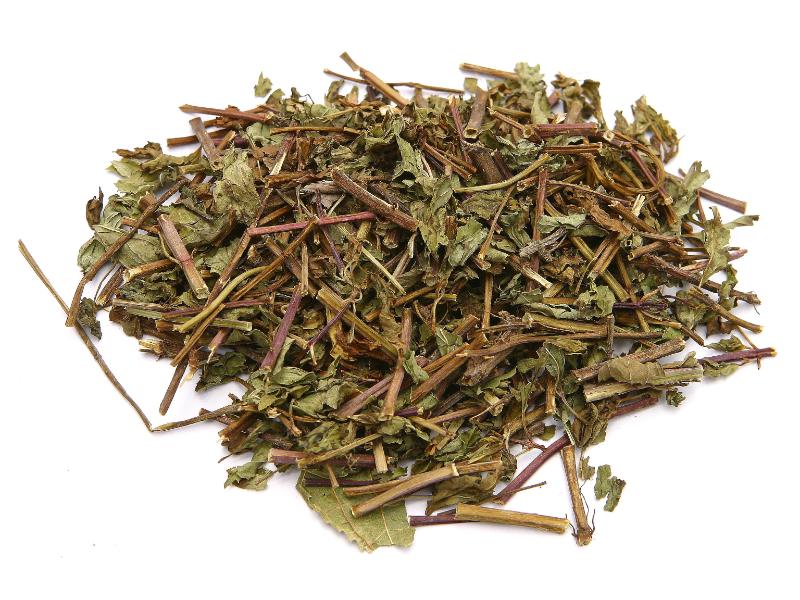Search in medicinals
Menthae Herba
Mint
薄荷 〔薄荷〕 bò hé

Alternate Chinese names: 番荷菜 fān hé cài; 南薄荷 nán bò hé; 猫儿薄荷 māo ér bò hé; 薄苛 bò kē; 薄荷草 bò hé cǎo
Kingdom: Plant
Origin in PRC Pharmacopoeia: Mentha haplocalyx Briq. (PRC Pharmacopoeia)
Origin in unofficial sources: Mentha haplocalyx Briq.*; Mentha haplocalyx Briq. var. piperascens (Malinvaud) C.Y. Wu et H.W. Li; Mentha arvensis L. var. Malinvaudi (Lévl.) C.Y. Wu et H.W. Li; Mentha dahurica Fisch. ex Benth.
Use: Medicinal and alimentary
Category: Exterior-resolving agents / Cool acrid exterior-resolving agents
Properties: Acrid; cool.
Channel entry: Lung, liver channels.
Actions and indications:
- Disperses wind-heat: Initial-stage external contraction of wind-heat and warm disease, with headache, heat effusion, and slight aversion to cold.
- Clears and disinhibits the head and eyes: Headache and red eyes due to wind-heat attacking upward.
- Disinhibits the throat: Painful swollen throat due to wind-heat.
- Outthrusts papules: Initial-stage measles or wind-heat invading the exterior, with papular rash failing to erupt.
- Courses the liver and moves qì: Depressed liver qì, with oppression in the chest and distension and pain in the rib-side.
Dosage and method: Oral: 2–10g in decoctions; often added at the end.
Warnings: Bò hé is aromatic, acrid and dispersing. It causes sweating and wears qì. It is unsuitable for constitutional vacuity with profuse sweating.
Product description: The squared cylindrical stem of the dried herb is 15–35 cm long, and 2–4 mm thick, with opposite branches on the upper part, and nodes 3–7 cm apart. It is yellowish brown with a purple hue or green in color and is covered with white down that is densest at the ridges. It is brittle, breaking easily to show a white hollow interior. The leaves are shriveled, and often broken. Their upper surface is darker green, while the under surface is pale green. They are brittle and are covered with white down. At the ends of the branches are often yellowish-brown verticillate inflorescences with multiple corollas.
Quality: Best are green leafy plants with a strong scent and no roots.
Production area: Cultivated in most parts, the main producers being Jiāngsū, Zhèjiāng, and Jiāngxī.
Back to search result Previous Next